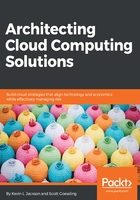
Implementation models and IT governance for executives
Implementation models are largely determined by IT governance. Governance for all cloud services, other than under a private deployment model, is outside of the consuming organization's purview. For this reason, cloud services may introduce some level of legal, security, regulatory, and jurisdictional risks. Realizing there may be some risk associated, cloud services can increase levels of adoption and enforcement of information technology standards. Additional investment commitments in infrastructure, training, and time may be required, depending on the compliance standards being met. A failure to obtain initial compliance and sustaining the level of commitment required will cause failure of even the best cloud computing solution.
Once executive decisions have been finalized, and investment commitments confirmed, a cloud computing adoption strategy can then move forward. The most broadly followed cloud adoption strategies are the following:
- Building competitive advantage, which typically targets organizational strategic reinvention of customer relationships, rapidly innovating products and services rapidly or building new or improved business models.
- Better decisions strategic vector that extensively leverages analytics to pull insights from big data. This also requires the seamless sharing of data across applications and the exploitation of data-driven and evidence-based decisions.
- Deep collaboration aims to make it easier to locate and use expert knowledge across a business ecosystem. This strategy requires improved integration between development and operations and collaboration across the organization and extended ecosystem.
Business model change strategies that can be used to support these adoption strategies are the following:
- Addressing more mission/business requirements via a customer self-service model
- Transitioning from single/limited IT providers into a multiple IT provider ecosystem
- Changing the design/build/maintain and identify/adapt/adopt technology mix from 80/20 to 20/80
- Transitioning from labor-driven HW/SW integration to value-driven IT service management
- Transitioning from dedicated single tenancy to shared service multitenancy
- Transitioning from a cost center that provides support to a business center that delivers tangible value